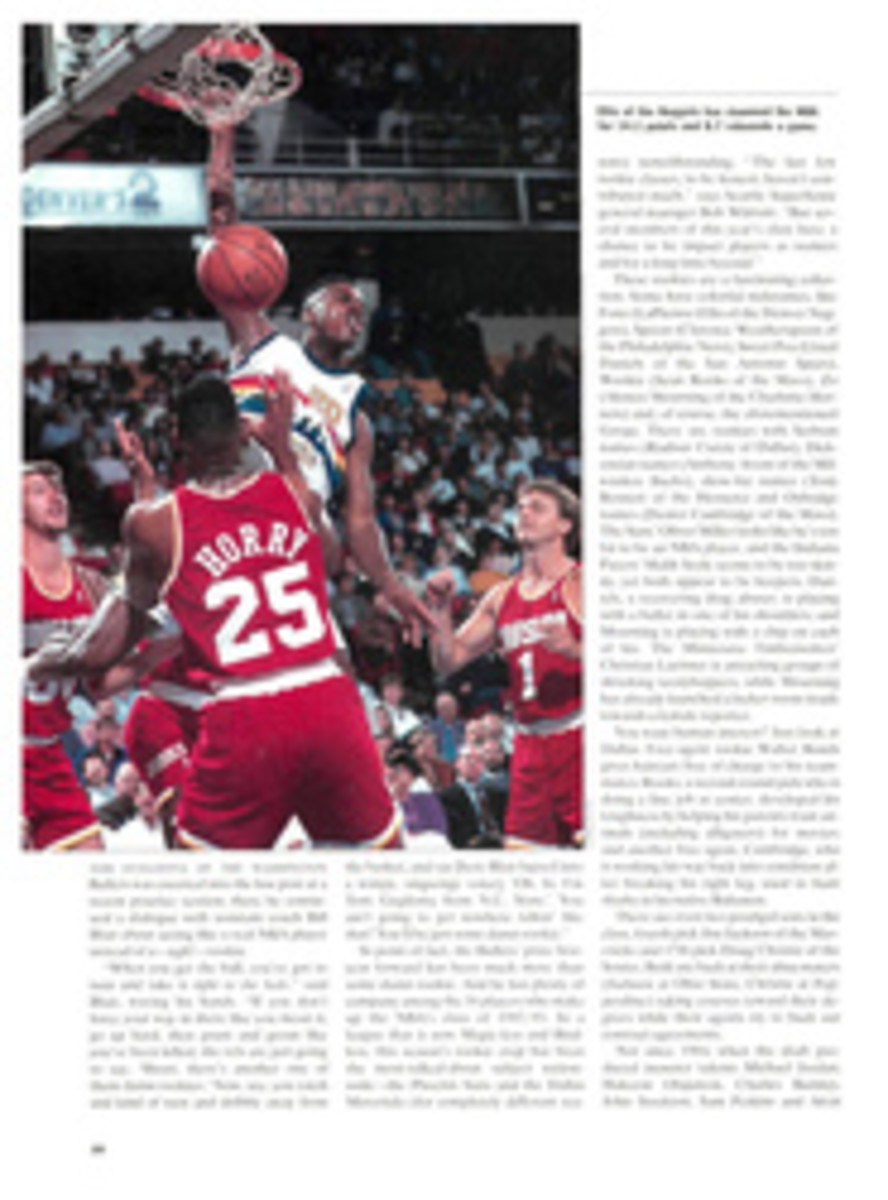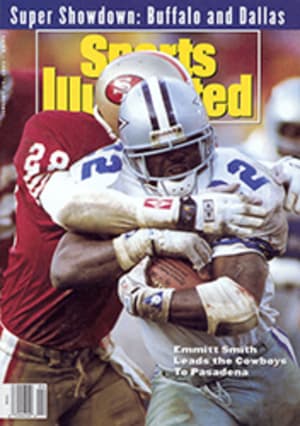
Baron Blimp Lou Pearlman, head of Airship International Ltd., is fulfilling adolescent dreams of glory
(Not in all issues.)
MILLIONS OF KIDS HAVE SEEN A blimp on occasion, but how many of
them have then hopped on their bicycles, rushed out to the airport,
hunted down the pilot and demanded that he give them a ride?
''Just one that I remember,'' says Roy Belotti, former captain of
the Columbia, the Goodyear airship that was docked at Flushing
airport in New York City. Belotti can still recall the heavyset
10-year-old who showed up on his bicycle in the summer of '64.
''I told him that I was sorry, but only Goodyear employees, their
families and members of the working press could go up in the
blimp,'' Belotti says. The boy pleaded. He whined, begged and
cajoled. Belotti wouldn't budge. Finally the youngster came up with
an angle. He was a reporter for his elementary school newspaper, so.
. . .
The boy's name was Lou Pearlman, and he got his ride. That he
eventually came to own the Metropolitan Life, Sea World and Budweiser
blimps was no surprise to those who knew him back then. Pearlman has
always loved blimps. More important, he has always had what, in the
old neighborhood, is called chutzpah.
After that first ride Pearlman continued to hang out at the
Flushing airfield. He worked on the Goodyear crew in the summers
during high school and college. While his classmates were at home on
midyear break, he was working the Super Bowl. All the while he was
studying the blimp business, inside and out, confident that he would
one day find a blimp to buy and a client willing to finance its
operating costs. ''Back then America was a one-blimp ((Goodyear))
nation,'' he says. ''I thought we could do better.''
That he had to wait so long for his very own blimp -- until he was
26 -- was a disappointment to Pearlman, but he kept busy. In 1975,
before he was even out of Queens College, he founded a helicopter
company that served New York commuters. Financing for the business
came in part from his uncle Jack Garfunkel, who was Art's father. A
short time later he expanded into the airline business and formed an
alliance with the German airline WDL Flugdienst. When Pearlman met
with WDL president Theodor Wullenkemper, the latter was dumbfounded.
''You're just a baby!'' Wullenkemper exclaimed.
Pearlman was insulted. ''What do you mean?'' he said. ''I'm 21
years old!''
Eventually, with the help of an investor, he bought his first
blimp, for half a million dollars, and found a client, Jordache
sportswear, to sponsor it. The day of its maiden voyage, in October
1980, Pearlman was bursting with pride. The blimp, which bore the
Jordache logo, was painted gold.
''It was a designer blimp,'' he says. Standing beside the runway
of the Lakehurst, N.J., airport, Pearlman watched as his blimp rose
into the sky, pivoted to the southwest and began listing to
starboard. It seems that on the side of the blimp that faced the sun,
the gold paint had absorbed heat, causing the helium inside to expand
unevenly. The blimp started moving in circles and then slowly
spiraled toward the ground, finally crashing into the $ trees just a
few hundred yards from the site of the 1937 Hindenburg disaster.
''I was standing beside the FAA official who had just authorized
the blimp for takeoff,'' Pearlman remembers. ''We were both pretty
glum.'' Fortunately the pilot escaped serious injury.
Many concluded that the disaster would be the upstart company's
swan song. They were wrong. Today Pearlman's firm, Airship
International Ltd. (AIL), based in Orlando, Fla., employs more than
100 people. In addition to owning the MetLife, Sea World and
Budweiser blimps, AIL will unveil two new airships later this year.
And how did the 38-year-old Pearlman, a bachelor who now lives
near Orlando, rise from the ashes of the Jordache debacle? Well, it
so happened that WDL had an old blimp sitting in a hangar in
Mulheim-an-der-Ruhr, Germany. ''They didn't have many takers,''
Pearlman explains, ''but it didn't come cheap.'' He didn't raise the
$3 million to buy the blimp and establish his company until 1985.
After getting the blimp Pearlman drew up a list of potential
sponsors for the airship, placing McDonald's name at the top. For
several weeks he tried to get an appointment with Dick Christian,
then a regional vice-president at the company's Bloomfield, N.J.,
office, but he couldn't get past Christian's secretary. So Pearlman
found out when she went to lunch, reached Christian by phone and
talked him into an appointment for that afternoon. He hung up before
the executive could change his mind.
On his way to Christian's office Pearlman stopped in an empty
conference room and placed a tiny air compressor on a table. He
attached it to a large, deflated balloon and turned on the
compressor.
''I talked to him about the business, told him how many people you
can reach through a blimp and so on, but he resisted,'' Pearlman
says. ''Then I showed him a videotape of the blimp, which ended with
a cartoon of a blimp with MCDONALD'S on the side. Then we walked down
the hallway, and I opened the conference room door.'' Inside was a
fully inflated 15-foot blimp, complete with the McDonald's logo.
''O.K., O.K.,'' said Christian.
Though the McDonald's partnership lasted only a year, the
fast-food company's high-profile name helped to establish AIL and
drive up the value of its stock -- Pearlman had taken the company
public in 1985 -- paving the way for future clients.
Still, it wasn't clear sailing. ''The problem wasn't finding new
clients, it was finding new blimps,'' Pearlman says.
Enter British entrepreneur Roger Munk, who was building a better
blimp. When Munk's company collapsed in 1990 under the weight of
$93.5 million in design and development costs, Pearlman purchased the
defunct firm's ground-support vehicles, manufacturing rights, spare
parts and its five most technologically advanced airships in the
world -- all for a total of $6 million. Today AIL's blimps are
insured with Lloyd's of London for $6.7 million each.
That many people believe McDonald's still sponsors a blimp is
testimony to the aircraft's ability to make a lasting impression on
the public. Pearlman calls this the ''X factor'' of blimp
advertising. ''A blimp says something about your company and gives
you an identity,'' he says. ''People take pictures of our product and
show them to their friends and family. What other advertising vehicle
can make that claim?''
According to AIL public relations director Scott Bennett,
independent studies have shown that a blimp can generate more than a
million dollars' worth of advertising a month. Most of the money
comes from appearances at sports events; each of Pearlman's ships
attends an average of three events a month. The arrangement between
blimp and television is quid pro quo. In return for its eye in the
sky, the network shows the blimp and makes mention of the airship at
least once an hour during a program.
Like fair-weather fans, a blimp can tolerate a little rain, but it
cannot brave ice or snow. There was no blimp at last year's Super
Bowl, not, as most people thought, because the game was held in a
dome but because it was held in icy Minnesota. The MetLife blimp did
appear at the Louisiana Superdome in New Orleans for the 1990 Super
Bowl. ''We had the camera zoom straight down to the top of the
dome,'' Pearlman says, ''where another camera, mounted inside the
dome, took over. It was as if we went right through the roof.''
Pearlman's clients pay $350,000 a month to lease a blimp. AIL's
expenses for maintaining and flying it come to more than $250,000 a
month. AIL's blimps travel like kings, each with a staff of 25
attendants. The road caravans include two maintenance trucks, a bus
to transport the crew and a 32,000-pound truck that bears the mast,
the 30-foot-long pole that acts as the anchor for the moored blimp.
When not on the road, Shamu, the Sea World blimp, remains at its
home base in Kissimmee, Fla., or prowls the skies over Sea World and
its local rivals, the Magic Kingdom and Epcot Center. According to
Pearlman, an outing by Shamu can inflate Sea World's gate receipts by
perhaps as much as 5%.
Pearlman will not reveal who the clients are for his two new
blimps, but he will admit, with little arm-twisting, that the British
Ministry of Defence and a soft-drink company are strong contenders.
Though AIL took on a lot of debt in its start-up years, the company
showed a profit in 1989 and, encouragingly, last year.
''Our business is expanding,'' Pearlman says. ''Everything is
looking up!''

